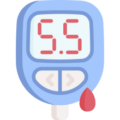Authors:
Nabila Faridi, PharmD
Kathleen Pincus, PharmD, BCPS, BCACP
Reviewers:
Sheena Antony, PharmD
Kevin Malloy, PharmD, BCPS
Megan Wesling, PharmD, BCPS, BCACP
Diana Issacs, PharmD, BCPS, BCACP, CDCES, BC-ADM
Citation: Frías JP, Davies MJ, Rosenstock J, et al. Tirzepatide versus semaglutide once weekly in patients with type 2 diabetes. N Engl J Med. 2021;385(6):503-515. doi:10.1056/NEJMoa2107519
The Problem
There are now over 30 unique therapeutic entities (and countless different products!) to treat hyperglycemia in patients with type 2 diabetes mellitus (T2DM). Do we really need another? Given the rates of poor glycemic control, disease progression, and complications, one could argue yes. The 2020 National Diabetes Statistics Report indicate that over 34 million people, approximately 13.0% of all United States (US) adults, were diagnosed with diabetes in 2018.1 While the glucagon-like peptide-1 (GLP-1) receptor agonists improve glycemic control, renal, and cardiovascular outcomes and induce significant weight loss, drugs that target more than one incretin hormone may have even greater therapeutic benefits. The SURPASS-2 trial investigators aimed to compare the efficacy and safety of once-weekly subcutaneous tirzepatide, a dual GLP-1/GIP agonist, with once-weekly subcutaneous semaglutide as add-on therapy to metformin for patients with uncontrolled T2DM.2




 iForumRx.org is a web-based community of practice designed to inform ambulatory care pharmacy specialists, pharmacy residents, and student pharmacists about high-quality, practice-changing evidence.
iForumRx.org is a web-based community of practice designed to inform ambulatory care pharmacy specialists, pharmacy residents, and student pharmacists about high-quality, practice-changing evidence.